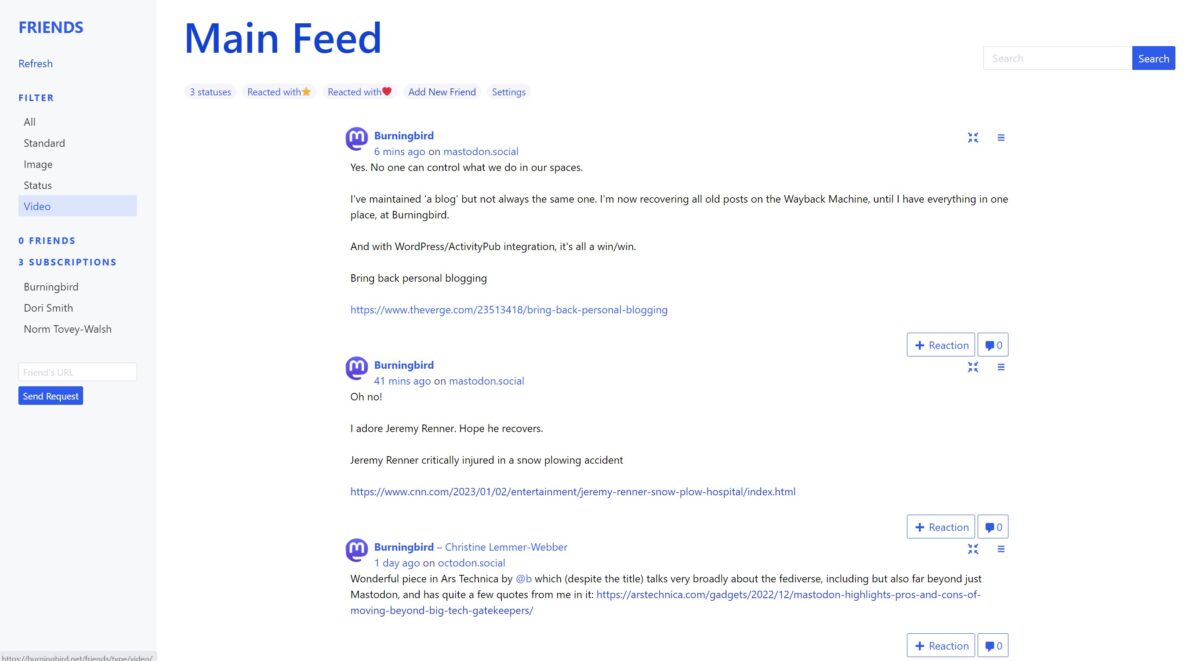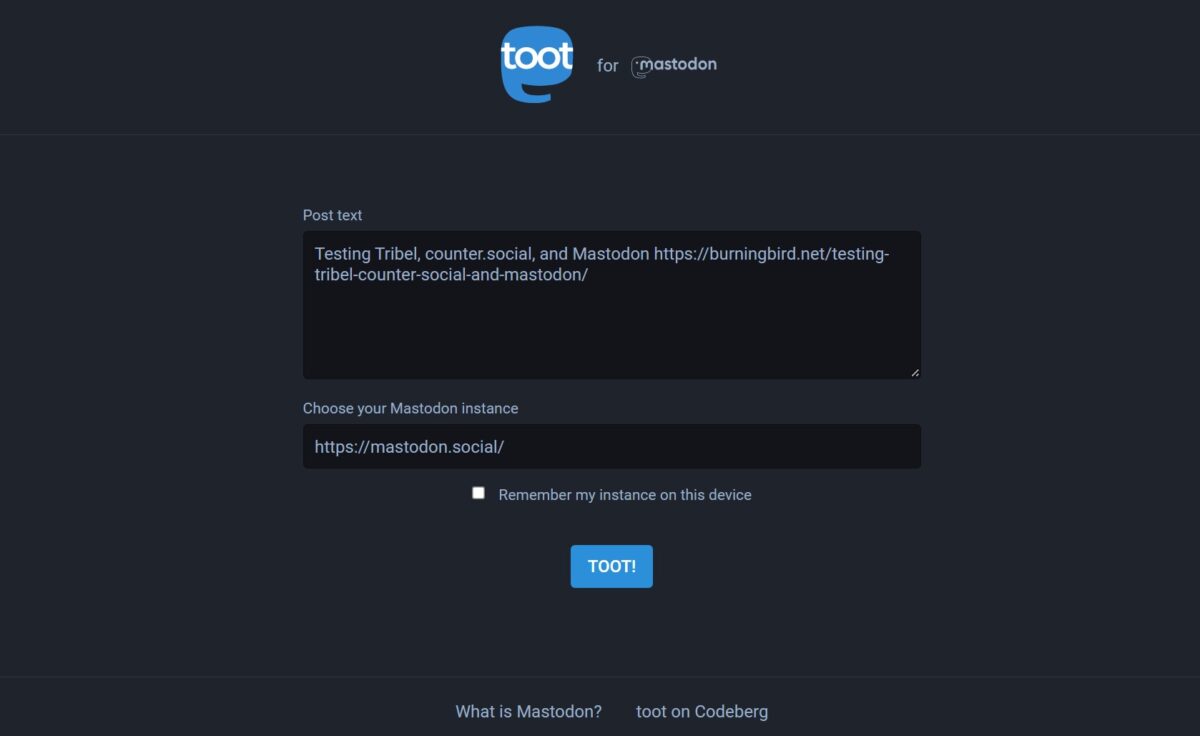The writing is what’s important. Everything else is just candy sprinkles.
Category: Weblogging

The ActivityPub WordPress plug-in is working beautifully. Not only can people follow me on Mastodon, I can now follow them back using the complementary Friends plugin. This plugin isn’t specific for ActivityPub. It allows you to subscribe to friend’s posts, ala Google Reader, and creates a personal Friends page to read most recent posts. ActivityPub […]
The Supreme Court decided in June, 2015 that the fundamental right to marry is guaranteed to same-sex couples. The decision was Obergefell v Hodges, and the was one of the most definitive for civil rights in the last century. A few short years later, this decision, like that for Roe v. Wade, which guaranteed rights […]

The social media upheaval continues but things are starting to quiet down a bit. Oh you can’t tell this from the media, which is full of stories leading with “Elon Musk says…”, but that’s primarily because the media hasn’t figured out how to wean itself off Twitter, yet. I quit Twitter the day that Musk […]

We look at today’s social media world post-Trump Presidency and we see a highly disconnected and fragmented world. The media proclaims it’s never seen society so polarized, but we’ve always been polarized. The only difference now is who controls the visibility of the fragments. Unlike earlier years, what was fit to print, or fit for […]
